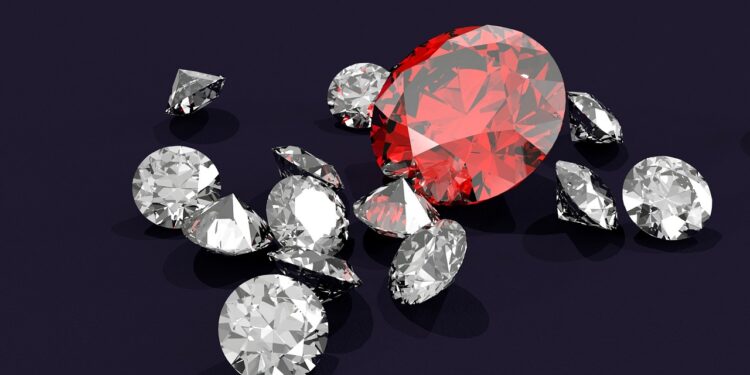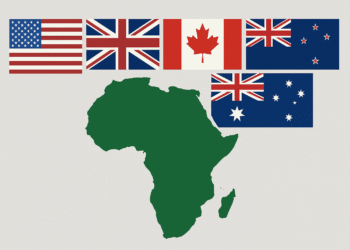INVESTING IN DIAMONDS: In the world of wealth-building, where returns and security reign supreme, does a diamond stand as a true contender, or is it simply a shiny illusion? It’s tempting to believe diamonds have great investment value. After all, diamonds have long been symbols of wealth, power, and unbreakable bonds. But let’s pause and scrutinize this notion. Are diamonds genuinely a savvy financial move, or is their appeal merely a masterstroke of marketing? Let’s peel back the glittering façade and see if diamonds are really worth the hype as an investment.
The allure of diamonds as an investment lies in their perception as rare, timeless, and valuable. Their small size and durability make them easy to store and transport, leading some to believe they are a discreet way to preserve wealth.
Additionally, diamonds carry an emotional narrative. When tied to special occasions like engagements, anniversaries, or milestones, they feel priceless. Marketing campaigns have cemented this idea. “A diamond is forever,” after all. But when you strip away the sentimentality, do diamonds really meet the criteria of a strong investment?
The Challenges of Resale Value.
One of the biggest hurdles in considering diamonds as investments is their resale value—or lack thereof. Retail markups for diamonds are significant, often ranging from 100% to 200%. This means the moment you purchase a diamond, its market value drops significantly. Selling it back often yields a fraction of what you paid.
Moreover, unlike gold, which has a universally recognized spot price, investing in diamonds posses risk, because diamonds don’t have a standardized resale market. Prices are highly variable and depend on subjective factors like trends, demand, and the individual buyer or dealer you’re negotiating with.
If liquidity is crucial in an investment, diamonds fall short. While they can be sold, doing so at a profit requires either rare expertise or sheer luck in timing and market conditions.
Are Diamonds Actually Rare?
Diamonds are marketed as rare, but this is a half-truth. While certain types of diamonds—such as large, flawless, or vividly coloured stones—are genuinely rare, the standard white diamond is more common than you might think.
The illusion of scarcity is largely a result of supply control by major players like De Beers, which historically regulated the flow of diamonds into the market to maintain high prices. This manufactured rarity creates the perception of exclusivity, but in reality, the diamond market is not as constrained as it seems.
Depreciation and Competition.
Unlike fine art or vintage wines, which can appreciate over time, diamonds are subject to depreciation, especially as consumer trends shift. Lab-grown diamonds, for instance, have disrupted the industry. These stones are virtually identical to their natural counterparts but come at a fraction of the price.
As lab-grown diamonds become more popular and socially acceptable, they could undermine the value of natural diamonds. The ethical concerns surrounding diamond mining, including environmental damage and human rights abuses, only add to the appeal of lab-grown alternatives.
For investors banking on diamonds appreciating in value over the years, this growing competition presents a significant risk.
The Myth of Inflation Hedging.
Some proponents argue that investing in diamonds is a good hedge against inflation, much like gold. However, this argument doesn’t hold up under scrutiny.
Gold and other precious metals are commodities with globally recognized values that tend to rise during economic uncertainty. Diamonds, however, are luxury goods. Their value is tied more to consumer confidence and demand than to economic cycles. In times of financial instability, people are less likely to splurge on luxury items, which can drive down diamond prices.
The Cost of Maintenance.
Another often-overlooked aspect of investing in diamonds as is the cost of ownership. High-quality diamonds require secure storage, such as a safe deposit box, which can incur annual fees. Regular cleaning and occasional reappraisals to maintain insurance coverage also add to the ongoing costs.
When compared to other assets, such as stocks or real estate, which generate income or grow in value without significant upkeep, diamonds fall behind.
The Role of Emotional Value.
While diamonds may not shine as financial assets, their emotional and symbolic value is undeniable. For many, they represent love, commitment, or achievement—qualities that are priceless in their own right. If you’re buying a diamond to celebrate a significant moment, its value goes beyond monetary considerations.
That said, mixing emotional and financial decisions can lead to skewed expectations. A diamond purchased for sentimental reasons may feel like an investment, but it’s essential to separate its emotional worth from its financial reality.
To be fair, there are rare instances where diamonds can make sense as investments. Exceptional stones with unique characteristics—such as the Hope Diamond or the Pink Star—can command astronomical sums at auction and serve as status symbols for the ultra-wealthy. But these are the exceptions, not the rule.
For the average investor, such opportunities are out of reach, requiring significant expertise, deep pockets, and a network of reliable buyers and sellers.
Final Thoughts
Diamonds may glitter, but for purpose of wealth investing in diamonds, rarely deliver. Their high markups, unpredictable resale value, and lack of liquidity make them better suited for jewelry boxes than investment portfolios.
However, that doesn’t mean diamonds are worthless. Their cultural and emotional significance ensures they will always have a place in our lives. Just don’t mistake their sparkle for financial security. When it comes to building wealth, stick with assets that offer transparency, growth potential, and proven returns.
So, the next time someone tries to sell you a diamond as an “investment,” smile, admire the sparkle, and politely decline. Save your hard-earned money for assets that truly shine in the financial world.












